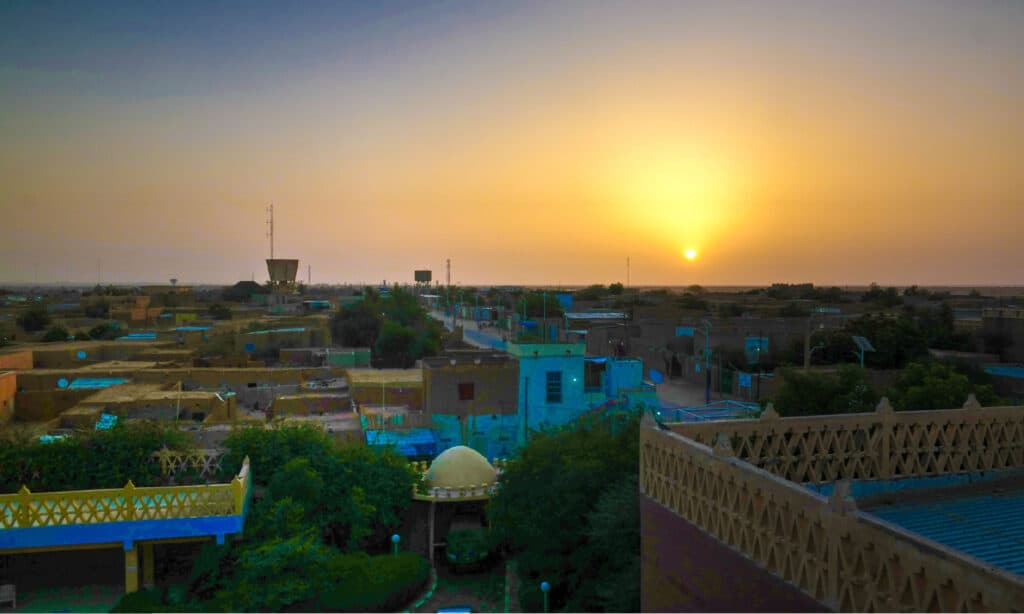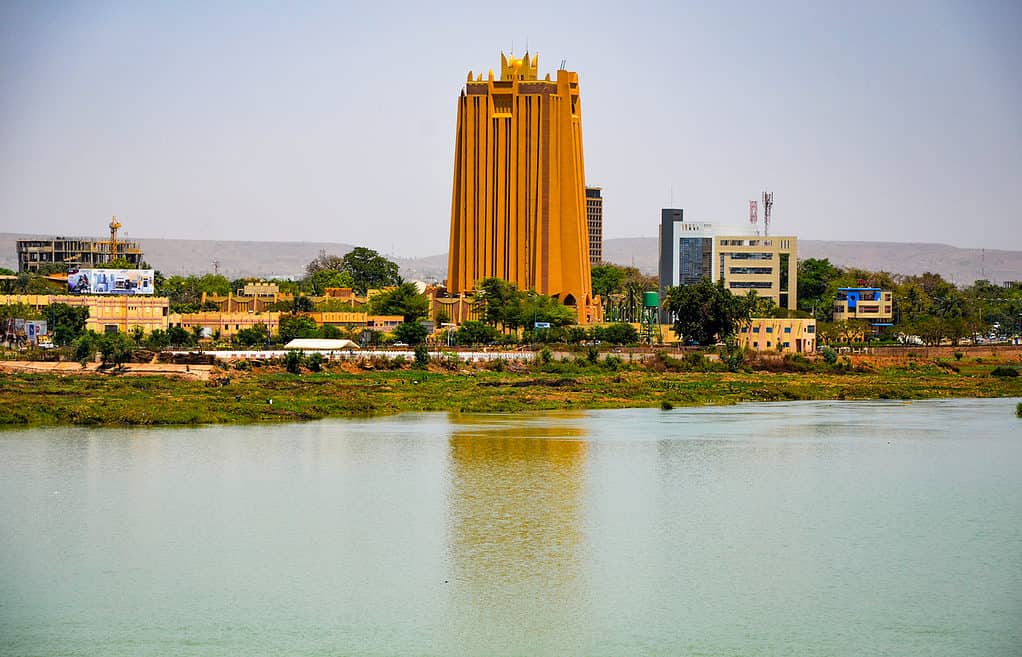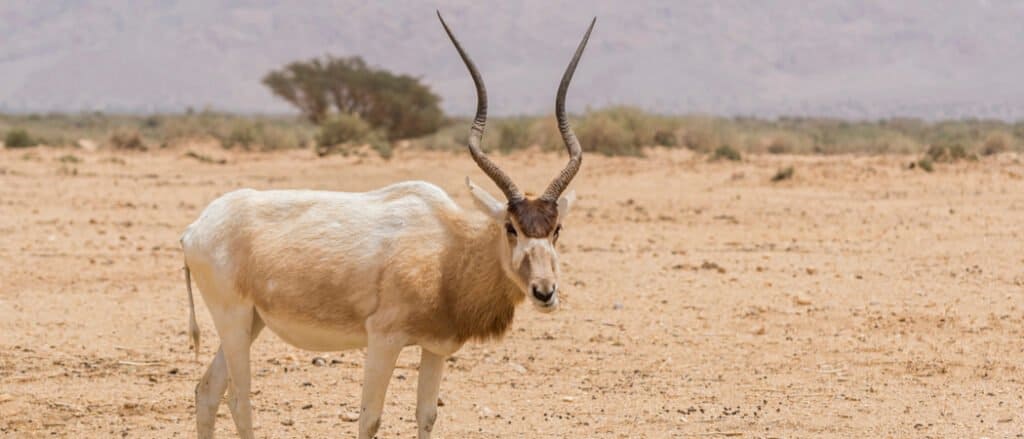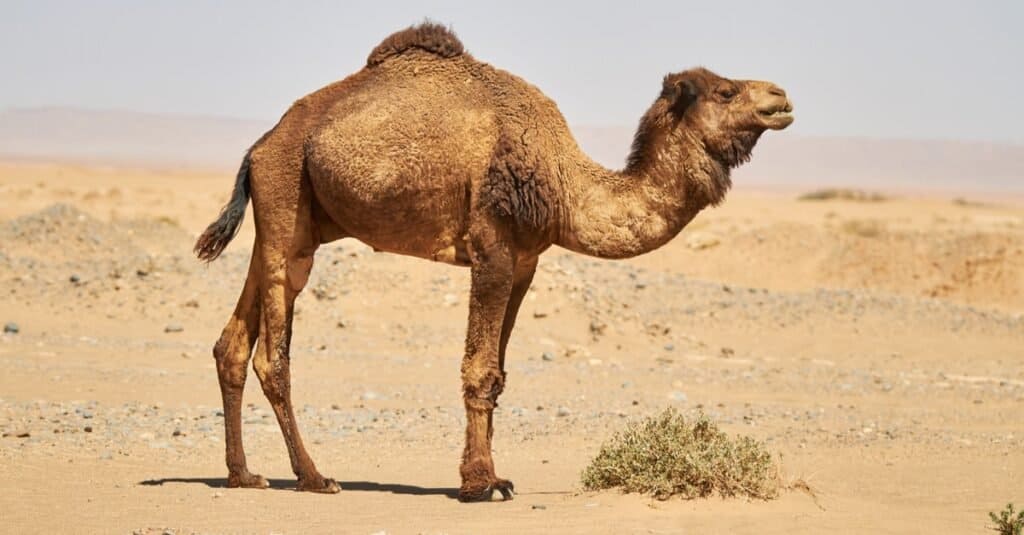Niger, located in West-central Africa, is the largest landlocked country on the continent. It’s one of the poorest countries in the world and has suffered a great deal of political instability. Yet it is also a land of natural beauty, wildlife, and untapped resources. Discover more about this little-known country and the history, meaning, and symbolism of its flag.

This is Agadez, the fifth largest city in Niger, bathed in the African sun.
©iStock.com/HomoCosmicos
Introducing Niger
Geography
Niger (officially the Republic of Niger) is the largest completely landlocked country in Africa. It is almost twice the size of France. It borders seven other African nations: Nigeria, Chad, Libya, Algeria, Mali, Burkina Faso, and Benin. The country gets its name from the Niger River that flows through its western regions. It comes from a Tuareg word meaning “flowing water.” Most of the 25 million citizens live in the western and southern regions that are more fertile and better watered. However, 80% of the country’s territory (in the north and east) lies in the harsh and unforgiving Sahara Desert, covered with sand dunes and windswept plains. The south is a savanna that is flat in some areas and has rolling hills in others.

The Niger River flows through Bamako, the country’s largest city with a population of three million.
©iStock.com/Aliou Hasseye
Ecosystem
The animal population of Niger includes some of the largest and most iconic African animals, including cheetahs, giraffes, elephants, lions, gazelles, Barbary sheep, and addax antelopes. Many of these are threatened by farming practices, poaching, and bushfires. Mali, Guinea, and Niger have all built dams on the Niger River, and this has reduced the water flow downstream, creating ecological challenges. Due to financial challenges, national parks in Niger suffer from a lack of staffing to prevent poaching.

The addax is a type of antelope indigenous to Niger.
©Cezary Wojtkowski/Shutterstock.com
History
People have inhabited the territory of Niger since prehistoric times. Its location lay on trade routes connecting North Africa with Sub-Saharan Africa, with the Tuareg tribes using camels to bring trade goods back and forth across the desert. Portions of Niger’s territory were part of great African empires: the Mali Empire, the Songhai Empire, the Sultanate of Air, and the Kanem-Bornu Empire.
In 1885, the Berlin Conference divided up Africa between the great powers of Europe. France took control of Niger and took control of it in a series of military expeditions marred by human rights abuses. France generally ruled indirectly, through local leaders. After World War II, devastated European countries could no longer maintain their colonial empires. Niger achieved full independence in 1960. Like many African countries, Niger has suffered from political instability. They have lived under five constitutions and three military governments. Since 2010, Niger has been a multi-party state.

In ancient times, camel caravans connected Northern and Southern Africa in trade routes.
©Photoestetica/Shutterstock.com
Economy
Sadly, Niger is one of the world’s most destitute countries. Some of the reasons for this are its landlocked position, desert environment, low literacy rate, high population growth, and rebel insurgencies. Most of the people make their living as subsistence farmers and an estimated 800,000 people are in slavery. Half the country’s budget is covered by foreign aid. Niger has some of the world’s largest uranium deposits, which provide export income. It also has deposits of gold, oil, and coal. Niger is part of the West African Monetary Union, which uses a common currency called the CFA franc. This is not necessarily an advantage to Niger’s development, though, as critics point out that it functions as a form of French neocolonialism, as explained in this video:
The Flag of Niger
Before independence, the flag of Niger was the French tricolor, consisting of vertical stripes of blue, white, and red. Niger’s own flag was designed in 1958 and adopted by the Territorial Assembly of the Niger Colony in 1959. Although the government of Niger has changed many times, the flag has stayed the same since then. It is a tricolor with horizontal stripes of orange, white, and green with an orange disc in the center. The orange band represents the Sahara Desert, the central white band represents the Niger River and purity, and the lower green band stands for the well-watered southern region and for hope. The central orange disc represents the sun and the country’s independence.

Niger’s flag represents its major geographic features.
©iStock.com/Oleksii Liskonih
How Can You Assist the People of Niger?
Now that you know about the immense challenges facing the people of Niger, you might wish there was something you could do to help. One place to start is USAID, the United States Agency for International Development. Some of the USAID projects in Niger focus on food security, the development of democratic institutions, human rights, healthcare, education, and crisis resolution.
The photo featured at the top of this post is © iStock.com/Oleksii Liskonih
Thank you for reading! Have some feedback for us? Contact the AZ Animals editorial team.






